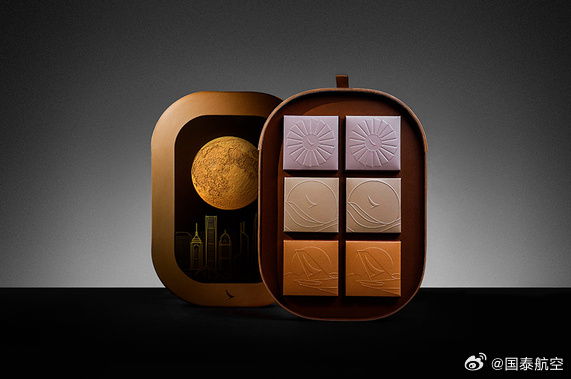
As of 23rd October 2020, The CNSA –China National Space Administration Belt and Road Initiative Lunar Mission on the One Hundred Kilometer diameter Von Karman Crater Chang’e 4 lander and the “Yutu 2” lunar rover the Chang’e-4 lander and the “Yutu-2” lunar rover Chang’e 4 lander and “Yutu 2” lunar rover usher in As the celestial bodies move, night falls once again on the back of the moon. The Chang’e 4 lander and the “Yutu 2” lunar rover completed the 23rd day of the month. At 21:40 and 12:00 on October 23, they completed the moon night mode setting according to ground instructions and entered moon night sleep. As of today, the Chang’e-4 lander and the “Yutu-2” lunar rover have successfully worked on the back of the moon for 660 earth days, traveling a total of 565.9 meters.

Recent basalt coverage area (red line area) recent basalt coverage area (red line area)
Based on the data of the panoramic camera stitched images and DOM images on the 22nd day, the “Yutu-2” lunar rover travelled to the basalt distribution area and the impact crater area with higher reflectivity during the 23rd day. Both locations are Located northwest of the lunar rover. In this travel route, the infrared imaging spectrometer performed a spectral detection of a rock block with a diameter of about 30 cm. The scientific research team is conducting in-depth research on the detection data. During the 23-month scientific exploration, the lander’s lunar surface neutron and radiation dose detector carried out the world’s first on-site- on-site particle radiation environment detection on the lunar surface, and obtained precious first-hand scientific data. The research results are in Science Advance Journal published.

The installation position of the moon surface neutron and radiation dose detector on the lander The installation position of the moon surface neutron and radiation dose detector on the lander
The moon surface neutron and radiation dose detector can comprehensively measure the total particle radiation dose, neutral particle radiation dose, particle radiation LET spectrum, neutrons, and charged particles on the moon surface. The actual measurement results show that the particle radiation dose rate near the landing zone is 13.2uGy/h(si), the dose equivalent is twice that of the surface of Mars and the interior of the space station, 5 to 10 times of a flight, and 300 times of the surface of the earth (Beijing).
The measured monthly radiation dose (the horizontal axis is Universal Time, the vertical axis are respectively: a total radiation dose rate in silicon (microGray/hour), b. neutral particle radiation dose rate in silicon (microGray) /Hour), c. The charged particle radiation dose rate in silicon (microGray/hour), d. The cosmic ray penetrating particle flux (pieces/square centimeter·hour·radian) measured monthly surface radiation dose (horizontal The axis is Universal Time, and the vertical axis are: a total radiation dose rate in silicon (microGray/hour), b. neutral particle radiation dose rate in silicon (microGray/hour), c. silicon Charged particle radiation dose rate (microGray/hour), d. Cosmic ray penetrating particle flux (pieces/square centimeter·hour·radian)

These field measurement results provide important radiation environment parameters for the follow-up lunar exploration in my country. The load also distinguishes the radiation dose of charged particles and neutral particles, thereby providing more accurate radiation physical quantities, which can serve the radiation protection of future astronauts.
Today in the history of spaceflight on 24th October :
On October 24, 2007, my country’s first lunar exploration satellite, Chang’e-1, was successfully launched by the Long March 3A carrier rocket at the Xichang Satellite Launch Center, opening the glorious course of my country’s lunar exploration project. On November 12, 2008, the full moon image taken by Chang’e-1 was released. On March 1, 2009, the satellite hit the moon in a controlled manner as scheduled. The successful implementation of this mission marked my country’s entry into the world deep space exploration club and established the third milestone of China’s spaceflight after artificial satellites and manned spaceflight.
On October 24, 2014, my country’s first-month high-speed reentry aircraft was launched from the Long March III C-modified II carrier rocket at the Xichang Satellite Launch Center, and it orbited the moon three days later. On November 1, the returner landed in Siziwang Banner, Ulanqab City, Inner Mongolia, China. As a pilot mission of the third phase of the lunar exploration project, it verified the key technology of lunar sampling and returning, laying a solid foundation for lunar sampling and returning.
Schematic diagram of reentry and return test track Schematic diagram of reentry and return test track…

随着天体的运行,夜幕再次降临在月球背面。嫦娥四号着陆器和“玉兔二号”月球车完成第23月昼工作,分别于10月23日21时40分和12时,按地面指令完成月夜模式设置,进入月夜休眠。截至今天,嫦娥四号着陆器和“玉兔二号”月球车已在月球背面顺利工作660个地球日,累计行驶565.9米。
最近玄武岩覆盖区域(红色线条区域)最近玄武岩覆盖区域(红色线条区域)
基于第22月昼全景相机拼接影像、DOM影像等数据情况,“玉兔二号”月球车在第23月昼期间先后向玄武岩分布区域和反射率较高的撞击坑区域行驶,这两个位置均位于月球车西北方向。在此行进路线中,红外成像光谱仪对一直径约为30cm的岩块进行了光谱探测。科研团队正在对探测数据进行深入研究。在23个月昼的科学探测中,着陆器上月表中子与辐射剂量探测仪开展了国际上首次月表实地粒子辐射环境探测,获取了珍贵的第一手科学数据,研究成果在Science Advance期刊发表。
月表中子与辐射剂量探测仪在着陆器上的安装位置月表中子与辐射剂量探测仪在着陆器上的安装位置
月表中子与辐射剂量探测仪可对月表的粒子辐射总剂量、中性粒子辐射剂量、粒子辐射LET谱、中子、带电粒子进行综合测量。实测结果表明,着陆区附近粒子辐射剂量率为13.2uGy/h(si),剂量当量是火星表面和空间站内部的2倍,一次航班的5到10倍,地球表面(北京)的300倍。
测量到的月表辐射剂量(横轴为世界时,纵轴分别为:a 硅中的总辐射剂量率(微戈瑞/小时),b. 硅中的中性粒子辐射剂量率(微戈瑞/小时), c. 硅中的带电粒子辐射剂量率(微戈瑞/小时),d. 宇宙线穿透粒子通量(个/平方厘米·小时·弧度)测量到的月表辐射剂量(横轴为世界时,纵轴分别为:a 硅中的总辐射剂量率(微戈瑞/小时),b. 硅中的中性粒子辐射剂量率(微戈瑞/小时), c. 硅中的带电粒子辐射剂量率(微戈瑞/小时),d. 宇宙线穿透粒子通量(个/平方厘米·小时·弧度)
这些实地测量结果为我国后续的月球探测提供了重要的辐射环境参数。该载荷还将带电粒子和中性粒子的辐射剂量进行了区分,由此提供了更加精准的辐射物理量,可服务于未来航天员的辐射防护。
航天史上的今天:
2007年10月24日,我国首颗探月卫星嫦娥一号由长征三号甲运载火箭在西昌卫星发射中心发射成功,开启了我国探月工程的辉煌历程。2008年11月12日,嫦娥一号拍摄的全月球影像图发布。2009年3月1日,卫星按预定计划受控撞月。本次任务的成功实施,标志着我国进入世界深空探测俱乐部,树立了中国航天继人造卫星和载人航天之后的第三个里程碑。
2014年10月24日,我国首个月地高速再入返回飞行器在西昌卫星发射中心由长征三号丙改II型运载火箭发射升空,三日后实现绕月。11月1日返回器在中国内蒙古乌兰察布市四子王旗境内着陆。作为探月工程三期先导任务,验证了月球取样返返回关键技术,为月球采样返回奠定了坚实基础。
再入返回试验轨道示意图再入返回试验轨道示意图
Images and visuals are from Weibo.. Also from my own lunar photography @KevinJamesNg
Like this:
Like Loading...





















